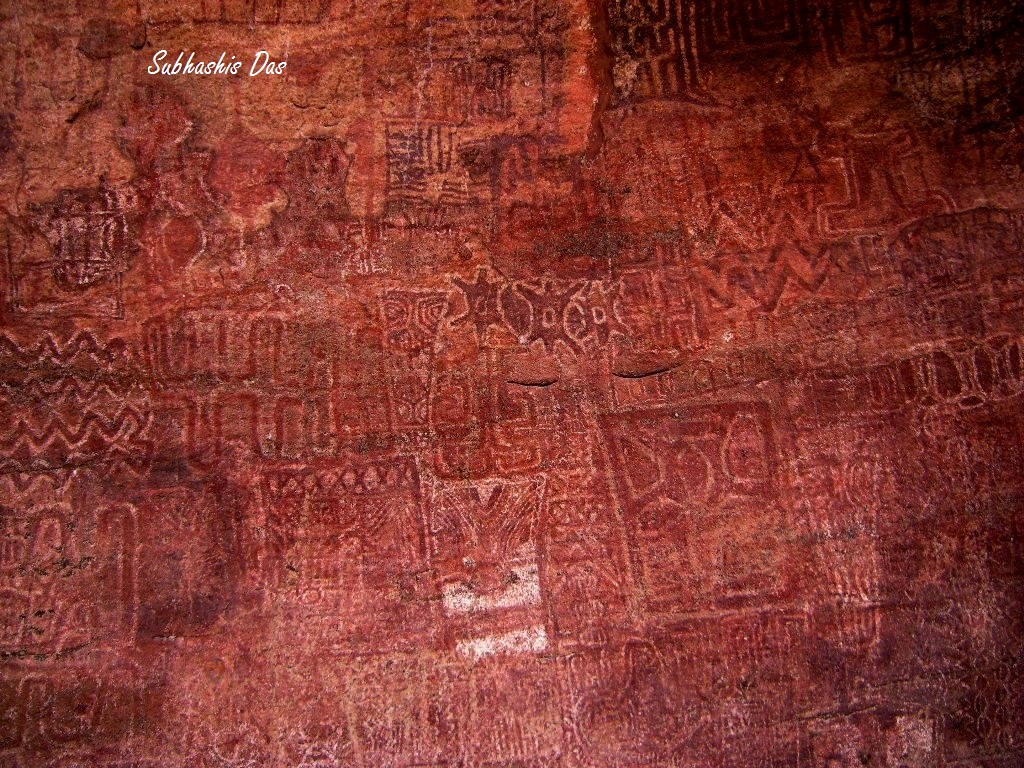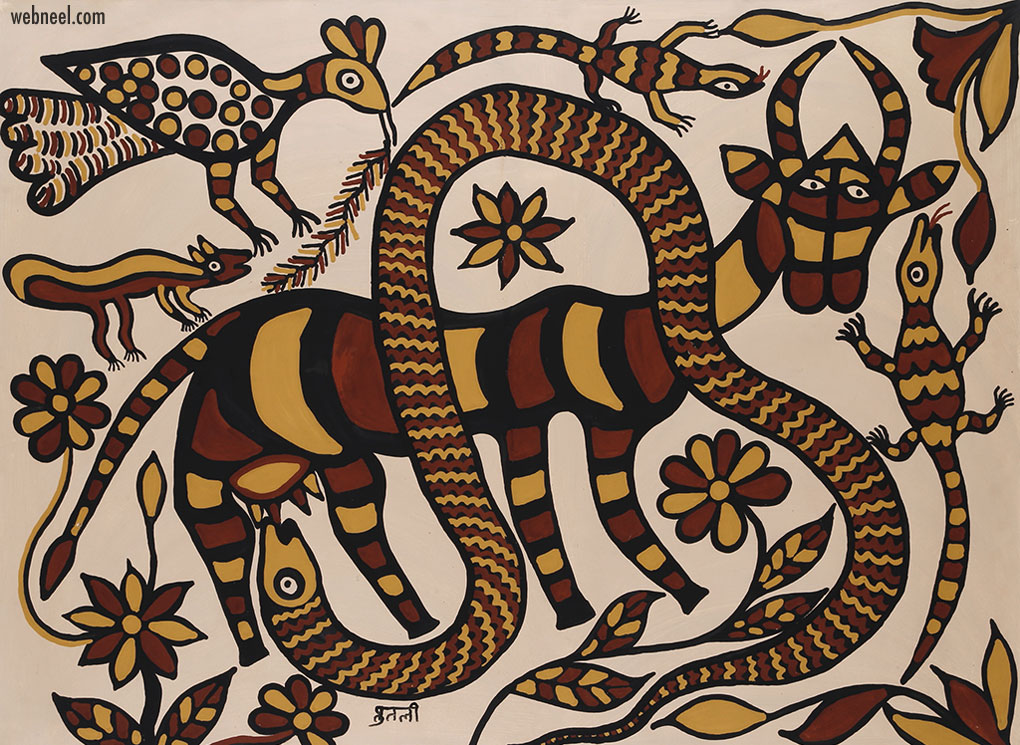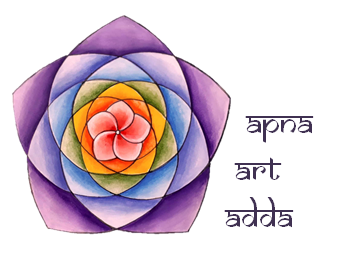Jharkhand has been in news lately… no, I am not talking about Corona! We seldom think about anything else, do we? It is in news for good reasons! Hazaribagh, a city in Jharkhand got GI (Geographical Indication) tag for the iconic Sohrai-Kohvar art. Now, what makes this GI tag so special? GI is a sign used on products unique to a specific geographical location. The product could be anything – food items, manufactured products, handicrafts, agriculture and more. For instance, Tirupati Laddu has got its GI tag too! In a way, it is like safeguarding Intellectual Property. So now that Hazaribagh has this special GI tag, no other state or country can claim the origins of this unique folk art.
Who knew that such a unique art form exists in one corner of our country (Except the Art Enthusiasts). The blog aims to bridge this information gap between the art and the artist.
So, let’s start with the roots.
- The Roots
Jharkhand has been one of the favourites of the archaeologists knowing its enchanting history dating back to the Stone Age. Numerous places in Jharkhand find fossils and historic artifacts in abundance! For now, let’s limit our discussion to Sohrai Art. This is one of the oldest art to exist since 10,000 to 4000 BC! Derived from Paleolithic age, the word ‘Soro’, means to drive with a stick, Sohrai has been following similar styles and patterns found in Isko Rock art in Satpahar, 45 km from Hazaribagh district. This beautiful cave art now adorns the mud walls of the tribe living here. They say the caves are large enough to accommodate more than 200 people! You see drawings of fishes, cows, deers, squirrels, insects, pottery, and harvest paintings too.

2. Etymology and significance
Etymologically, ‘Koh’ means ‘cave’ or room and ‘var’ refers to the couple tying the knot. Traditionally, the bridal and nuptial room is beautifully painted with Kohvar style paintings.

‘Sohrai’ comes from ‘Soro’, a Palaeolithic age word, which means ‘to drive with a stick’. Santhal tribe based in this region celebrates, Sohrai, the chief festival rejoicing harvest and honouring their cattle. This festival coincides with Diwali during October-November. Every year, they paint their mud walls with drawings and interesting patterns (representing the harvest season) and erase them off when the festival ends. Thus, the art is divided into two major styles based on harvest and marriage season.

3. The Artist
Sohrai art is a matriarchal heirloom, a tradition inherited from mother to daughter called as ‘Ma-Beti Parampara’. So, the art is mainly practiced by tribal women of remote villages in the Barkagaon block in Hazaribagh district. Several resident tribes adopted this prevalent art form such as Prajapati, Oraon, Teli, Kurmi, and Ganju.

4. Art Material
In Sohrai Art, the artist uses chewed saal wood tooth-sticks (datun) or broomsticks and cloth swabs to daub the surface using different earth colours, unlike Kohvar art that uses comb or fingertips. This art is usually monochromatic or colourful and requires a little pre-planning. Well, the paintings could be as huge as 12 x 18 feet! The different colours used in this are made from naturally available soils in the surrounding areas such as — Duddhi matti/ Charak matti (white mud), Kali matti (maganese black), Pila matti (yellow ochre), and Lal matti/Geru (red oxide).

5. The Art technique and symbolism
What amazes me is the allegory of this unique folk art! The process of making this art itself comes with a deep sacred-symbolism. For instance, in Khovar style, the house is the mother earth covered with black mud representing the womb. The black earth is layered with white earth or Dudhi-matti (milk), representing the father God, the symbol of sperm and light. So, when the black earth is completely concealed with white (representing the consummation) and scraped with a comb, the forms of mother Goddess emerge through the beautiful designs. For a nuptial chamber, a pregnant peacock motif is considered auspicious and particularly compelling as it represents fertility.

In Sohrai Art, the artist first draws the red line representing the ‘blood of the ancestors’ or fertility and procreation. Next is black, signifying the mark of the God of death, Shiva. Subsequently, the all-embracing outer lines portray their traditional values of fidelity, chastity, and protection. Next, the white line is painted representing the food. Previous year’s rice is grated with milk to make this white colour.
The figments of the artist’s memory come alive in the designs and adorn the humble huts. Their designs are mostly nature-inspired such as flowers, fruits, birds, lizards and animals. The creator of all animals, Pashupati, is also depicted riding on an animal. One of the popular ones is the elephant, symbolising the paddy clan and associated with the auspicious harvest festival.

6. Bulu Imam, the revivalist!
A big-game hunter in the 1960s and 70s, Bulu Imam’s life took a turn in 1979 during the journey around the state in Jharkhand with the British traveller-writer Mark Shand. He saw, the state had destroyed the thick forest for coal mining. This forest was home to tribal people for centuries. It was not just an environment damage and dislocation of tribals but also a great loss of culture. Bulu quit hunting and became the propagator to save the deteriorating culture.

His activism became instrumental in exhibiting the art of Sohrai and Kohvar on international platform. In 1987 he became convener for INTACH (The Indian National Trust for Art and Cultural Heritage) a Delhi-based NGO. In 1995, he established Sanskriti Museum and Art Gallery in Hazaribagh and also The Tribal Women Artists’ Cooperative (TWAC) that aims to boost and empower tribal women to continue painting. To add value to their work, he encouraged them to put the art on canvas or cloth and exhibit them across the world.

Touring the world with the artists, Bulu also gathered funds and support representing their work. So far, TWAC held 50+ exhibitions worldwide taking this diminishing folk art to the mainstream.
Were you aware of this unique Folk art before? Sad to know many artists are ignorant about the Indian art forms and its rich tradition. Please share this post and help create awareness about this rare art from our land.


Fascinating post, Harshada! 👏
(I was not aware of this kind of art, until now.)
LikeLike
Thank you Ken. Glad you liked the post. 😇
LikeLiked by 1 person